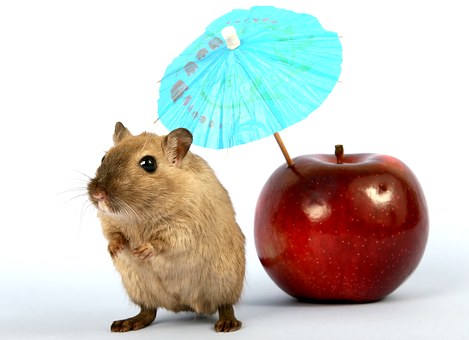Place your votes: BNA Council & Committee elections
22nd July 2024
21st Jun 2021
The encoding of new information into memory depends on being able to use focused attention to resist extraneous distraction - in other words, to stay ‘on track’. In their recent article in the British Neuroscience Association (BNA) journal, Brain and Neuroscience Advances, authors, Landreth et al., investigate distraction and interference effects on object memory, to look at cognitive impairments associated with schizophrenia.
Encoding information into memory is sensitive to distraction. At the same time, retrieving that memory may be compromised by interference from pre-existing memories.
These two debilitating effects are common in neuropsychiatric conditions. However, to date, modelling them preclinically has been slow, as it requires prolonged training.
Memory in rodents can only be inferred through a behavioural change, and one such change is a measurable increase in its exploration of a new, unfamiliar item. To test for this, a rodent is usually placed into an arena and allowed to explore a pair of identical objects for a few minutes. Following this, the animal is removed from the arena for a delay period after which it is placed back into the initial arena where it encounters one object from the initial pair (which should be familiar) alongside a novel object. Good memory is revealed by increased exploration of the novel object.

This novel object recognition test (NOR) is used in rodent labs worldwide, as well as when testing human memory in the clinic.
For example, NOR deficits can be seen in both Alzheimer’s disease and schizophrenia patients.
These patients’ memory problems can be the result of two different but related effects.
Firstly, memory acquired during the initial object encounter may be sufficiently fragile that imposed experience during the delay corrupts the memory, resulting in amnesia at test. Such amnestic experiences may be manual handling and removal to a novel arena for animals or engagement in an unrelated task for patients. Although this ‘distraction’ effect is a common symptom in patients it is rarely considered when testing NOR memory in animal models.
Secondly, even when distraction is minimised, patients may still have a deficit when object memory is tested over several trials; for example, the accumulation of information over repeated exposure to different objects tends to make subsequent object novelty judgements increasingly poor.
This effect is termed proactive interference (PI), where old memories interfere with ongoing memory demands. Distraction and PI are clearly important cognitive symptoms in patients. However, replicating PI effects in animal disease models is difficult, particularly due to the potential amnestic confound of distraction.
In this BNA paper (Landreth et al., 2021) a recent development of the rodent NOR task arena was used that minimises distraction effects by removing the handling step during the NOR delay (Chan et al., 2018). Instead, animals were trained to shuttle back and forth through a door between home and object arenas.
The authors used this new NOR arena to test for PI in the scPCP rat model of schizophrenia (Cadinu et al., 2018), providing a new set of high-throughput tasks with which to probe fundamental cognitive symptoms of schizophrenia in preclinical models.
Click here to read the full article
About Brain and Neuroscience Advances
Brain and Neuroscience Advances is a peer-reviewed, open-access journal, which publishes high quality translational and clinical articles from all neuroscience disciplines; including molecular, cellular, systems, behavioural and cognitive investigations.
The journal welcomes submissions in basic, translational and/or clinical neuroscience. Research papers should present novel, empirical results that are expected to be of interest to a broad spectrum of neuroscientists working in the laboratory, field or clinic.
Brain and Neuroscience Advances is now indexed in PubMed Central.
Never miss the latest BNA news and opportunities: sign up for our newsletter